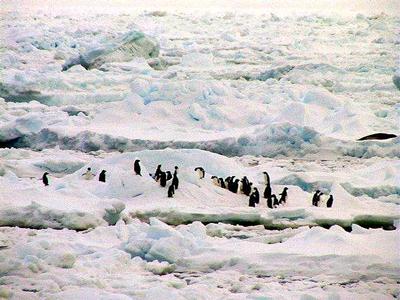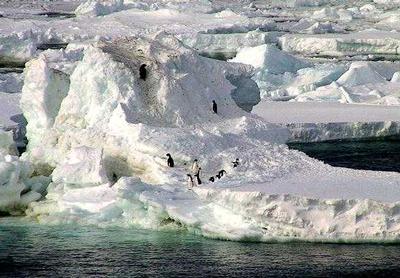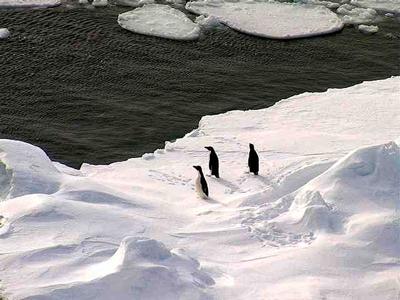14 March, 2001
Krill March 14 2001
-66 51 lat / 064 12 S long
As we progressed through the pack ice I was constantly lured back outside
into the cold. This was an area dotted with both penguins and seals. The
reason for them being on the ice was that the Krill were underneath it.
Krill are the "power lunch" of Antarctica. They are small, shrimp-like
critters belonging to the family Crustacea. Other examples of this group
include crabs, barnacles and lobsters. Of the 85 species of krill known to
exist, 11 occur only in the Antarctic area.
Krill tend to congregate in large groups or swarms which make them easy prey
for their predators. These predators include practically all of the
vertebrate and some of the invertebrate animals that exist in these
Antarctic waters (do a web search on what the difference is between a
vertebrate and a invertebrate animal). From my studies there are quite a
few krill to be eaten. Whales alone eat about 180 x 10 to the 6th metric
tons of krill a year. Humans have also taken part of the krill harvest,
taking out over 100 billion metric tons. This human impact on the krill in
relation to the food chain that depends on it is still unknown. How much is
too much has yet to be answered. There is too little known about these
species to even make a guess at this point. Most of what we do know about
krill comes from the work of British scientist's in the 1930's. They
parcticipated in the Discovery I and II research. (Who were these
scientists?) Their research was aimed at studying about the diet and
distribution as well as life habit of baleen whales. Since krill are a major
food source of whales, they wanted to know as much as possible so they could
hunt whales more efficiently. From 1910 to 1966 for example, blue whales
were hunted nearly to extinction. It is estimated that 330,000 blue whales
were slaughtered before their low numbers finally brought around their
protection.
As the ship made it's way through the ice I wondered if the renewed interest
in krill research would be enough to protect this fragile ecosystem for
future generations. I can only hope!s




Contact the TEA in the field at
.
If you cannot connect through your browser, copy the
TEA's e-mail address in the "To:" line of
your favorite e-mail package.
|
